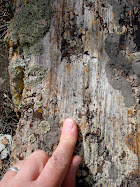As students walked into my Earth Systems Science class on the first day of fall semester, 2005, they saw a satellite image I had just grabbed from NOAA’s website: Hurricane Katrina, aimed straight at New Orleans. It seemed like the perfect image to illustrate the relevance of studying Earth. But I’m a solid-earth geoscientist; I’ve never taken a class in Oceanography or Climatology or Meteorology. And when the science about hurricanes and global warming became big news, I wasn’t very well prepared to answer students’ questions about what scientists really think. Since then, I’ve read news reports, NOAA’s web page, articles in Science, Real Climate... and I’ve had trouble figuring out how all the pieces fit together.
Storm World, the new book by Chris Mooney, gives me the context I needed. It starts by tracing the history of ideas about hurricanes through the 19th and 20th centuries. One of Mooney’s central points is the difference in methodology and models, from the very beginning, between scientists who started with physically based models and scientists who started with observations. It’s a familiar pattern to this field geologist, who has heard Ernest Rutherford’s comments about physics vs. stamp-collecting in many different guises. But in the history of hurricane science, it’s clear that both approaches can provide insights, and both can miss the mark. For instance, in the 19th century, two key aspects of hurricanes were recognized by the two different groups: physics led to theorizing about the release of heat as clouds form, and observations led to descriptions of a hurricane’s circling winds. (It took recognition of the Coriolis effect to show that the two models could work together.) Although it is possible to follow the two approaches into the 21st century, the researchers interact, sometimes by attacking one another, and sometimes by picking up an idea from the other group and transforming it. (For instance, observations showed that hurricanes derive their power from warm ocean water – which leads to the big question addressed first by theoreticians: what happens if we warm the atmosphere and oceans?)
The book continues by tracing the debate over what effect (if any) global warming will have (or has already had) on hurricane strength. It covers the science, the personalities, and the media attention in 2005. All the while, it manages to be simultaneously even-handed and engaging. I don’t know why it works – the history and the science are both complicated, and the cast of characters is immense. And yet the story is woven together so neatly that I never felt the need for a time line or a chart showing the academic genealogy of the major players.
And now I have answers to a lot of my questions. What exactly is the Atlantic Multidecadal Oscillation, and why don't I understand the explanation on NOAA's website? (Answer: it's an alternate way of explaining recent warm temperatures in the tropical Atlantic, one that doesn't rely on global warming. It isn't clear whether there really is a cycle, or whether temperature changes from the 70's (cooler) to the 00's (warmer) are the result of natural processes or anthropogenic global warming.) Why does NOAA's website contradict articles in Science? (Answer: partly because there's argument over the articles, but also partly because of decisions by political appointees.) The history and politics of the science are fascinating, and have influenced the way in which the science is described to the general public. These are things I need to know - as a teacher, I also have the opportunity to frame discussions in particular ways, just as science journalists do. I haven't yet decided how I will change my discussion of climate in class, but I'm thinking that it may need a bit of an overhaul.
It is refreshing to read such an engaging account of science in action. I would recommend it to anyone who is interested in the history of science, in climate and weather, or in the interactions of science, the media, and public policy. And for anyone who, like me, teaches about weather and climate in the context of introductory science courses, the book is an absolute must-read.
Tuesday, July 3, 2007
book rec: Storm World by Chris Mooney
Subscribe to:
Post Comments (Atom)

No comments:
Post a Comment